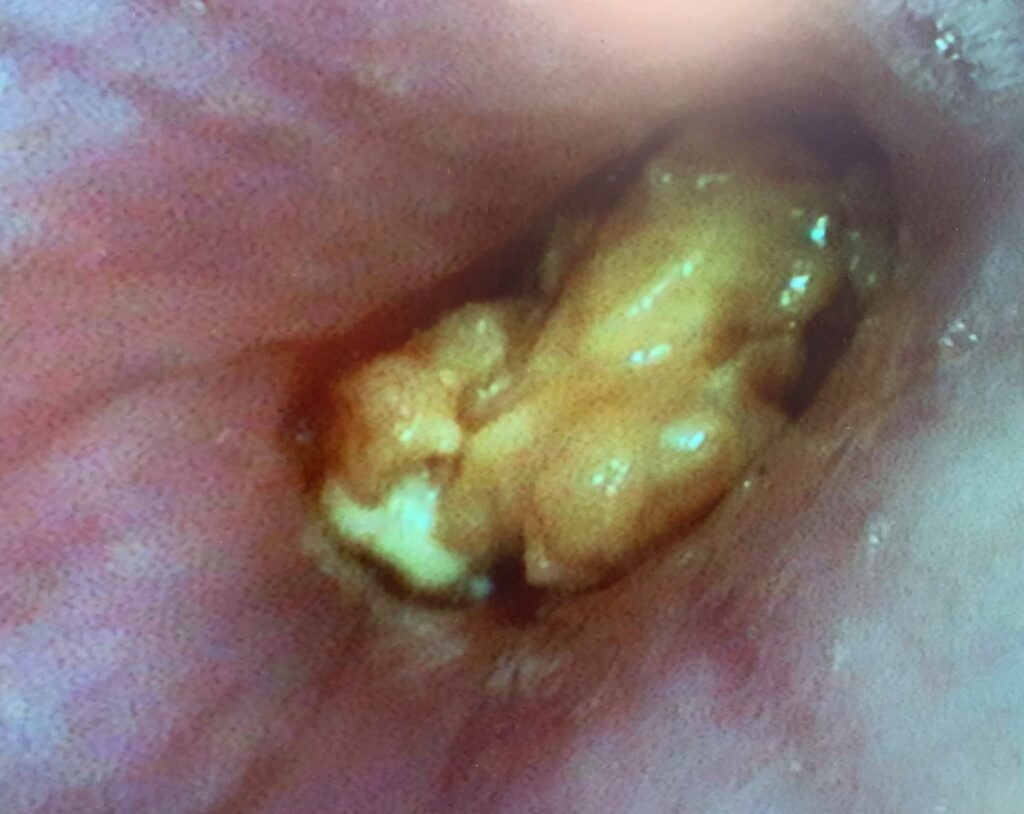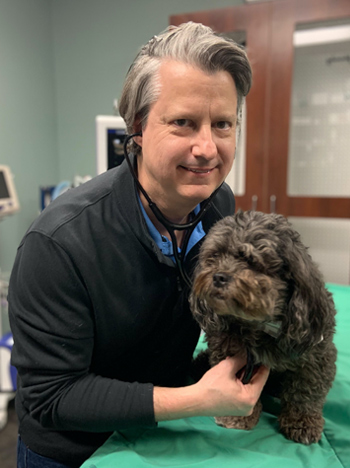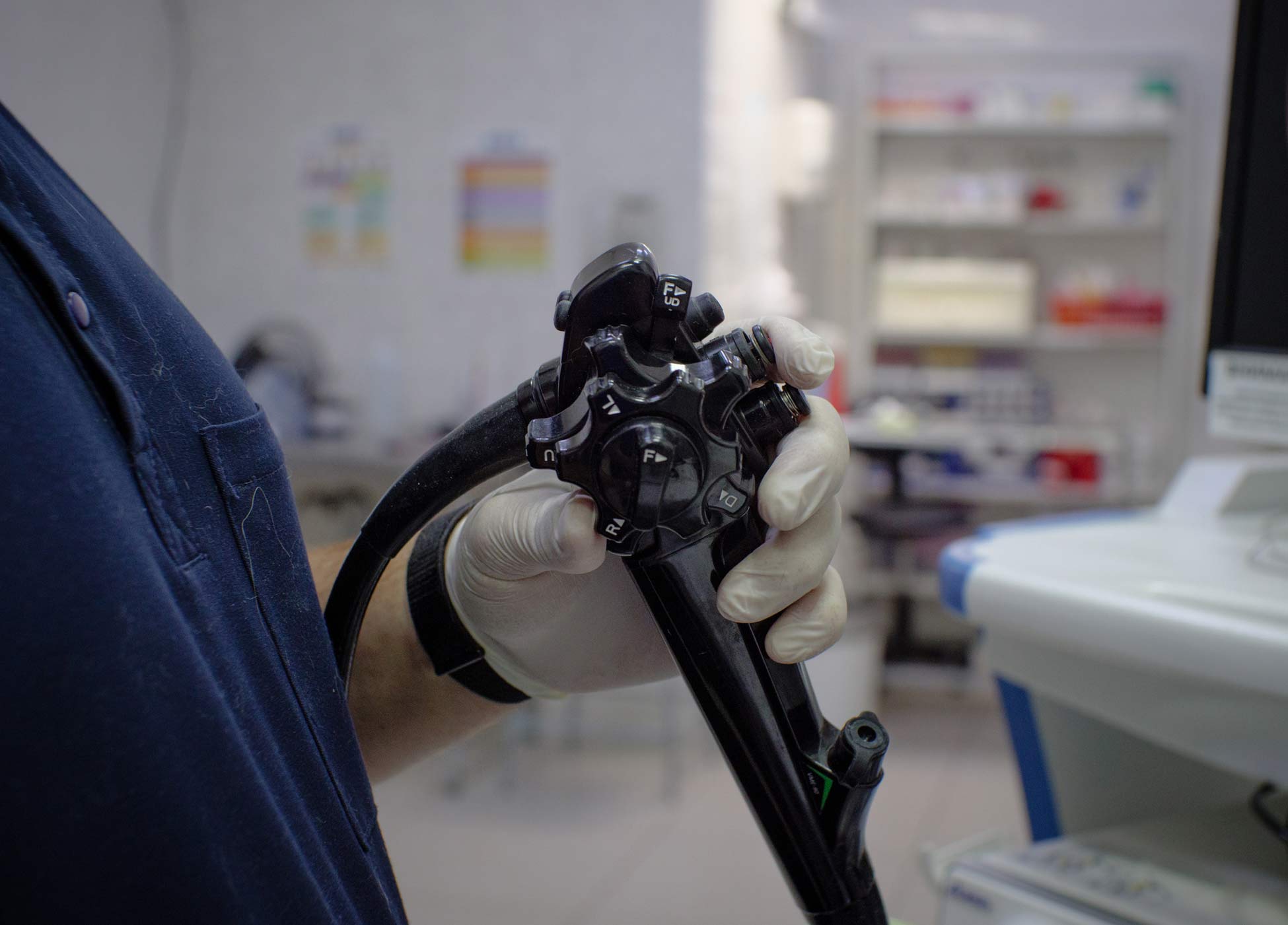What is the esophagus?
The esophagus is a muscular “tube” that connects the mouth to the stomach; it carries food, water — and unfortunately things that should never be eaten — from the mouth safely through the thoracic cavity into the stomach. The esophagus is not a “passive” tube, but instead actively moves food into the stomach via peristalsis — this is how animals can eat horizontal and do not require gravity to “pull” food and water into the stomach.
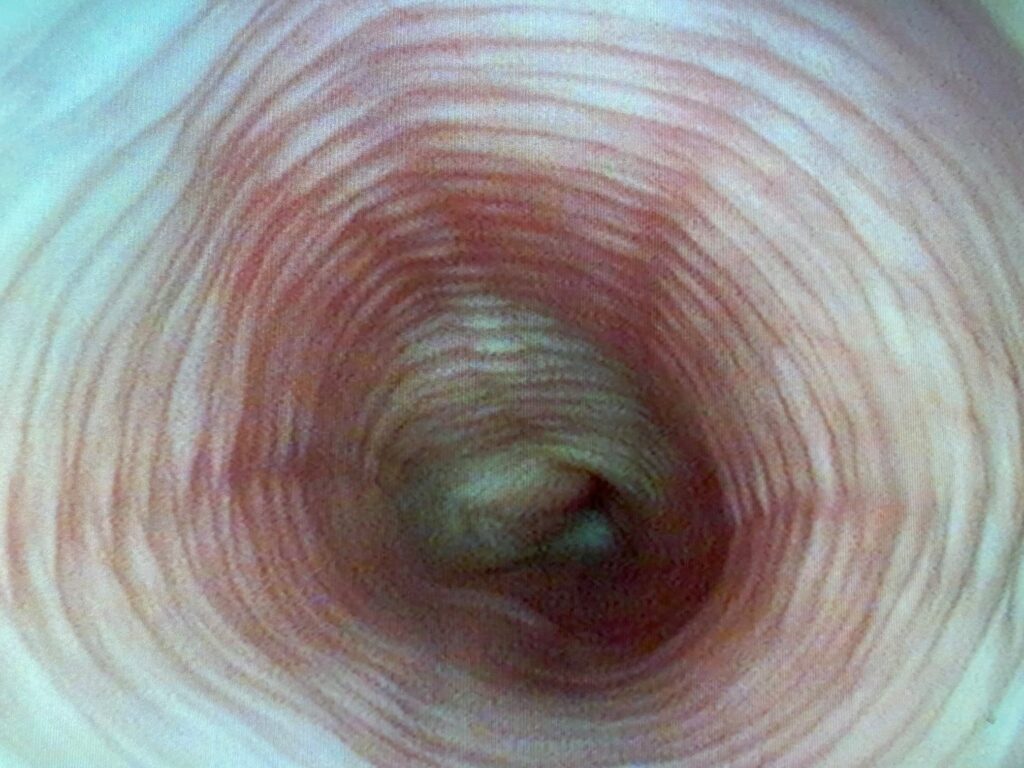
Between the esophagus and the stomach is a valve called the “lower esophageal sphincter” which helps keep stomach contents (food, acid) from refluxing up into the esophagus (think about the one-way “valve” opening in a lobster trap).
In cats (and humans), the first part of the esophagus is made up of “striated” muscle and the lower part made up of “smooth” muscle; whereas in dogs (and cattle) the entire esophagus is made up of “striated” muscle type.
What is an esophageal stricture?
An esophageal stricture is a narrowing of the esophagus that has occurred because of severe damage and scarring of the lining of the esophagus.
This narrowing can be so severe that food and water can no longer pass through the esophagus.
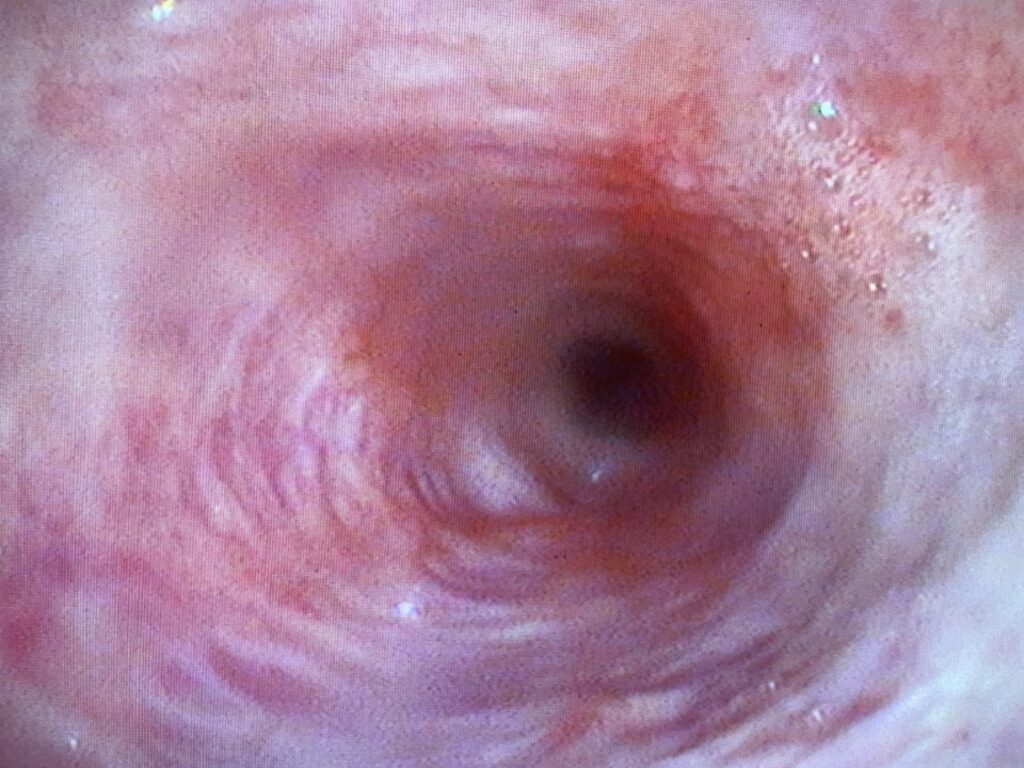
What causes esophageal strictures in dogs and cats?
Most commonly, esophageal strictures are caused after a large item (food or non-food) is swallowed and gets stuck in the esophagus. Large pieces of food, treats and commonly toys, get stuck in the esophagus. In cats, the antibiotic doxycycline is well-known to cause strictures if the tablet gets stuck in the esophagus (doxycycline tablets should never be given to cats!).
Once these items are lodged in the esophagus, the lining of the esophagus can become ulcerated and eroded, and instead of healing, scar tissue forms, which causes the stricture. Chronic vomiting can also lead to esophageal strictures due to stomach acid eroding the delicate lining of the esophagus. Very infrequently, cancers (malignant tumors) can also lead to esophageal strictures in dogs and cats.
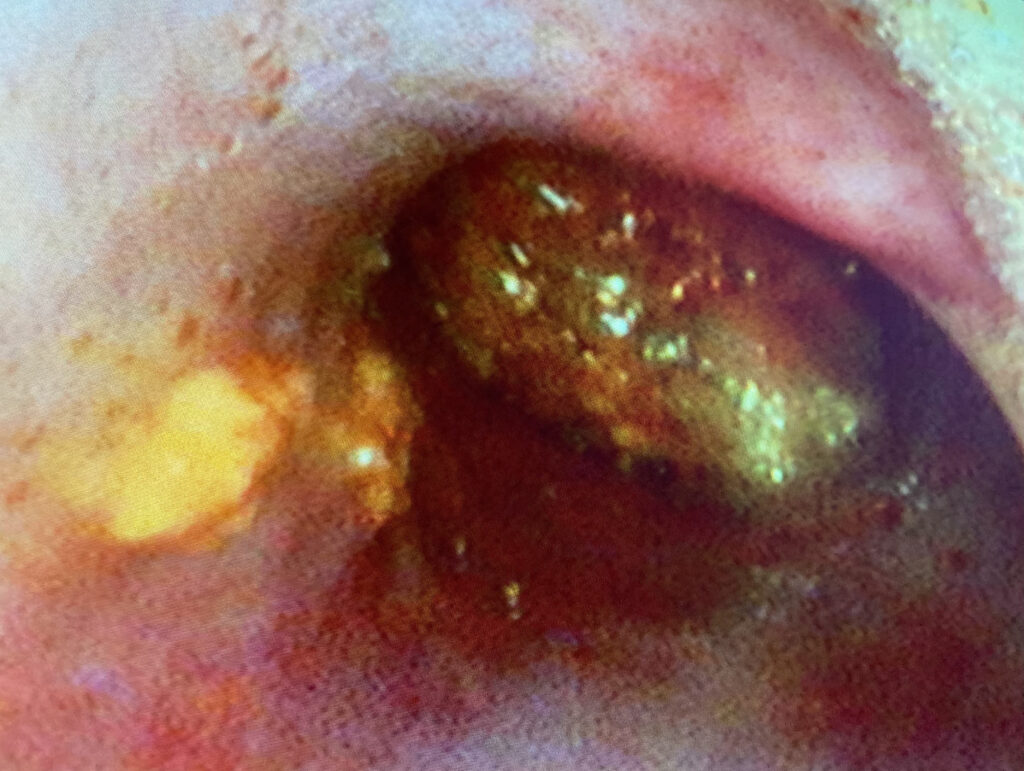
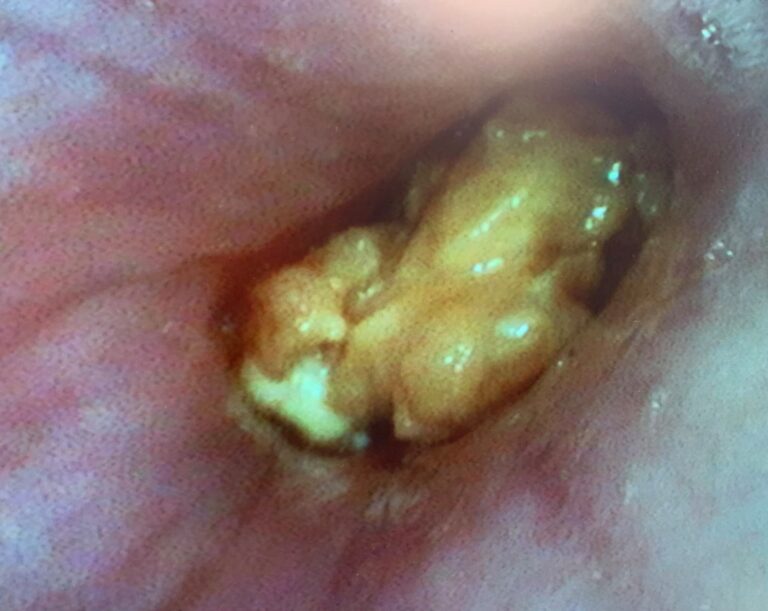
What are the symptoms of an esophageal stricture?
Reluctance to eat, inability to swallow food, drooling, regurgitating food almost immediately after swallowing, pain when swallowing and weight loss (if the stricture has been present for some time preventing adequate intake of calories).
The following is a video of a patient we saw for esophageal stricture that occurred after prolonged anesthesia (stomach acid refluxed up into the esophagus while she was anesthetized). This patient was given a very small amount of canned dog food to swallow so that we could observe her symptoms. Treatment was successful and she went on to live a very long and healthy, happy life!
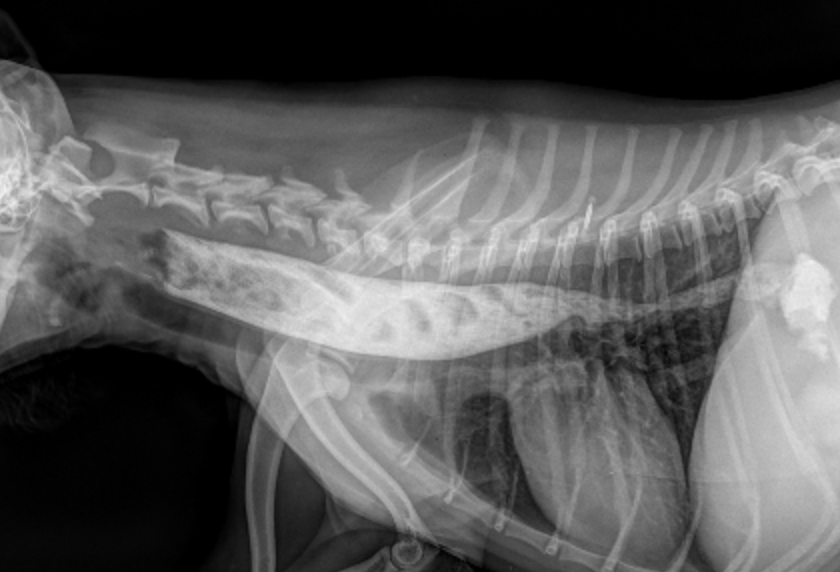
How are esophageal strictures diagnosed?
Sometimes, esophageal strictures can be diagnosed by the patient’s history as well as by observing the symptoms of the patient.
Contrast X-rays of the esophagus (ie. giving liquid contrast material by mouth with a syringe) can outline the degree and location of a stricture. Endoscopic evaluation of the esophagus can also diagnose a stricture.
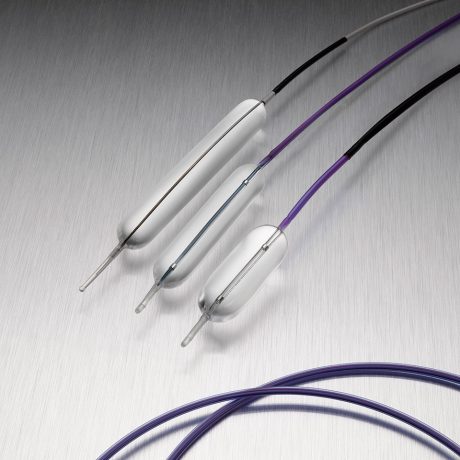
How are esophageal strictures treated?
While the patient is under general anesthesia, and using endoscopy, balloon dilators are used to “stretch open” the stricture. These dilator devices are oblong “balloons” that are passed through the endoscope. While deflated the balloon is positioned within the stricture, then the balloon is inflated to extreme pressure which forces the stricture to “open up” by breaking down the scar tissue. This process is repeated several times, each using a slightly larger diameter balloon.
The following video shows a balloon dilation procedure being performed in a dog with a severe esophageal stricture.
What is the prognosis for esophageal strictures?
Oftentimes patients need more than one ballooning procedure — usually spaced about 7-10 days apart. However, for benign strictures, the prognosis is excellent for return of fairly normal swallowing ability and good quality of life!
Do you think that your pet may have developed an esophageal stricture? Please call us to see if we can help.

Author:
James Woods DVM, MS, DACVIM (SAIM)
Ph: (912) 721-6410
Contact Us
